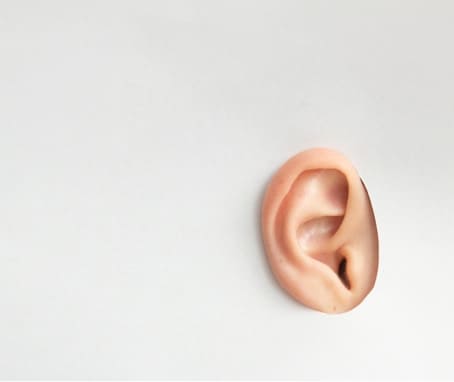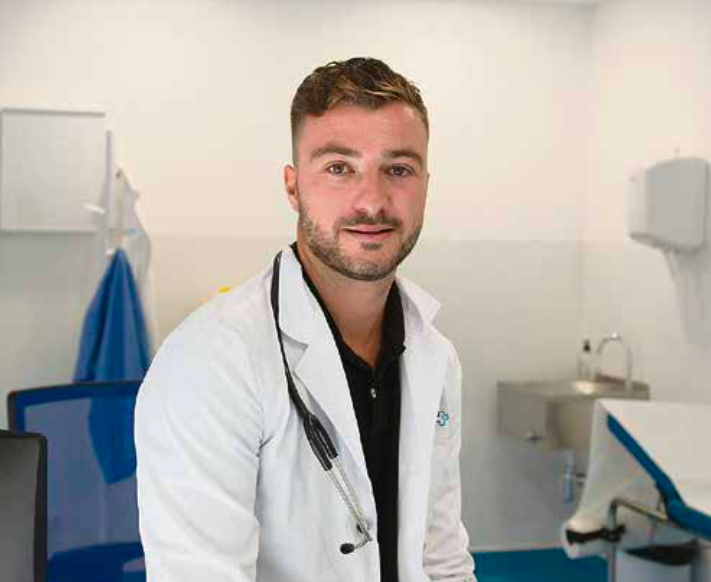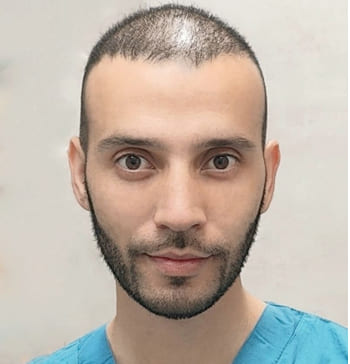

CLAMOXYL 500 mg HARD CAPSULES

Ask a doctor about a prescription for CLAMOXYL 500 mg HARD CAPSULES

How to use CLAMOXYL 500 mg HARD CAPSULES
Introduction
Leaflet: information for the user
Clamoxyl 500 mg hard capsules
amoxicillin
Read the entire leaflet carefully before starting to take this medicine, as it contains important information for you.
- Keep this leaflet, as you may need to read it again.
- If you have any doubts, consult your doctor or pharmacist.
- This medicine has been prescribed to you (or your child), and you should not give it to others, even if they have the same symptoms as you, as it may harm them.
- If you experience side effects, consult your doctor or pharmacist, even if they are side effects not listed in this leaflet. See section 4.
Contents of the leaflet
- What is Clamoxyl and what is it used for
- What you need to know before taking Clamoxyl
- How to take Clamoxyl
- Possible side effects
- Storage of Clamoxyl
- Contents of the pack and further information
1. What is Clamoxyl and what is it used for
What is Clamoxyl
Clamoxyl is an antibiotic. The active ingredient is amoxicillin. This belongs to a group of medicines called "penicillins".
Antibiotics are used to treat bacterial infections and are not effective against viral infections such as flu or colds.
It is essential that you follow the instructions regarding dosage, administration interval, and treatment duration indicated by your doctor.
Do not store or reuse this medicine. If you have any leftover antibiotic after finishing the treatment, return it to the pharmacy for proper disposal. Do not throw medicines down the drain or in the trash.
What is Clamoxyl used for
Clamoxyl is used to treat infections caused by bacteria in different parts of the body. Clamoxyl can also be used in combination with other medicines to treat stomach ulcers.
2. What you need to know before taking Clamoxyl
Do not take Clamoxyl
- if you are allergic to amoxicillin, penicillin, or any of the other components of this medicine (listed in section 6)
- if you have ever had an allergic reaction to any antibiotic. This can include a skin rash or swelling of the face or throat.
Do not take Clamoxyl if any of the above points apply to you. If you are unsure, consult your doctor or pharmacist before taking Clamoxyl.
Warnings and precautions
Consult your doctor or pharmacist before starting to take Clamoxyl if:
- you have infectious mononucleosis (fever, sore throat, swollen glands, and extreme fatigue)
- you have kidney problems
- you do not urinate regularly.
If you are unsure whether any of the above symptoms apply to you, consult your doctor or pharmacist before taking Clamoxyl.
Blood and urine tests
If you are having:
- urine tests (glucose in urine) or blood tests for liver function
- estriol tests (used during pregnancy to check if the baby is developing normally).
Tell your doctor or pharmacist that you are taking Clamoxyl. This is because Clamoxyl can alter the results of these types of tests.
Other medicines and Clamoxyl
Tell your doctor or pharmacist if you are using, have recently used, or might use any other medicines.
- If you are taking allopurinol (used for gout) with Clamoxyl, you may be more likely to suffer a skin allergic reaction.
- If you are taking probenecid (used to treat gout), it may reduce the excretion of amoxicillin and is not recommended. Your doctor may adjust the dose of Clamoxyl.
- If you are taking anticoagulants (such as warfarin), you may need more blood tests.
- If you are taking other antibiotics (such as tetracycline), Clamoxyl may be less effective.
- If you are taking methotrexate (a medicine used to treat cancer and severe psoriasis), penicillins can reduce the excretion of methotrexate and cause a potential increase in side effects.
Pregnancy, breastfeeding, and fertility
If you are pregnant or breastfeeding, think you may be pregnant, or plan to become pregnant, consult your doctor or pharmacist before using this medicine.
Driving and using machines
Clamoxyl may have side effects, and the symptoms (such as allergic reactions, dizziness, and convulsions) can make you unfit to drive.
Do not drive or operate machinery unless you feel well.
3. How to take Clamoxyl
Follow the administration instructions for this medicine exactly as indicated by your doctor or pharmacist. In case of doubt, consult your doctor or pharmacist again.
- Swallow the capsules with water, without opening them.
- If you cannot swallow the capsule, tell your doctor, and they may prescribe a more suitable formulation for you. The capsules are not suitable for treating patients who cannot swallow capsules due to the risk of choking. Other formulations are available, depending on the dose, including oral formulations that can be used especially in patients who cannot swallow capsules.
- Space the doses evenly throughout the day, at least 4 hours apart.
The usual dose is:
Children under 40 kg of body weight
All doses are calculated based on the child's body weight in kilograms.
- Your doctor will tell you how much Clamoxyl to give to your baby or child.
- The usual dose is 40 mg to 90 mg per kilogram of body weight per day, administered in two or three divided doses.
- The maximum recommended dose is 100 mg per kilogram of body weight per day.
Adults and children over 40 kg of body weight
The usual dose of Clamoxyl is 250 mg to 500 mg three times a day or 750 mg to 1 g every 12 hours, depending on the severity and type of infection.
- Severe infections:750 mg to 1 g three times a day.
- Urinary tract infection:3 g twice a day for one day.
- Lyme disease (an infection transmitted by parasites called ticks):isolated migratory erythema (early stages - circular pink or red rash): 4 g per day; systemic manifestations (late stages - with more severe symptoms or when the disease spreads throughout the body): up to 6 g per day.
- Stomach ulcers:750 mg or 1 g, twice a day, for 7 days with other antibiotics and medicines to treat stomach ulcers.
- To prevent heart infection during surgery:the dose will vary depending on the type of surgery. Other medicines may be administered at the same time. Your doctor, pharmacist, or nurse can provide more details.
- The maximum recommended daily dose is 6 g per day.
Kidney problems
If you have kidney problems, the dose may be lower than the usual dose.
If you take more Clamoxyl than you should
If you have taken more Clamoxyl than you should, the signs may be stomach upset (nausea, vomiting, or diarrhea) or crystals in the urine, which can be observed as cloudy urine or problems urinating. Talk to your doctor as soon as possible. Bring the medicine to show it to the doctor.
In case of overdose or accidental ingestion, consult your doctor or pharmacist immediately or call the Toxicology Information Service, phone 91 562 04 20, indicating the medicine and the amount ingested.
If you forget to take Clamoxyl
- If you forget to take a dose, take it as soon as you remember.
- Do not take the next dose too soon, wait at least 4 hours before taking the next dose.
- Do not take a double dose to make up for forgotten doses.
How long to take Clamoxyl
- Continue taking Clamoxyl for the time your doctor has indicated, even if you feel better. You need to take all the doses to overcome the infection. If some bacteria survive, they can cause the infection to recur.
- Once you finish the treatment, if you still feel unwell, you should go back to see your doctor.
Thrush (a fungal infection of the moist parts of the body that can cause pain, itching, and white discharge) may appear if you take Clamoxyl for a long time. If this happens, consult your doctor.
If you take Clamoxyl for a long time, your doctor may perform additional tests to check that your kidneys, liver, and blood are functioning normally.
If you have any further questions about the use of this medicine, ask your doctor or pharmacist.
4. Possible side effects
Like all medicines, this medicine can cause side effects, although not everybody gets them.
Stop taking Clamoxyl and see a doctor immediately if you experience any of the following serious side effects – you may need urgent medical treatment:
The following side effects are very rare (may affect up to 1 in 10,000 people)
- allergic reactions, the signs can include: itching of the skin or rash, swelling of the face, lips, tongue, body, or difficulty breathing. These can be serious and, in some cases, have been fatal
- skin rash or flat red patches under the skin surface or bruising of the skin. This is due to inflammation of the blood vessel walls due to an allergic reaction. It can be associated with joint pain (arthritis) and kidney problems
- a delayed allergic reaction may appear, usually 7 to 12 days after taking Clamoxyl; some signs include: rashes, fever, joint pain, and swelling of the lymph nodes, especially under the arms
- a skin reaction called 'erythema multiforme' in which you can develop: purple or reddish patches on the skin, especially on the palms of the hands or soles of the feet, swollen areas of skin, soft tissues on the surface of the mouth, eyes, or genitals. You may have a fever and feel very tired
- other serious skin reactions can include: change in skin color, lumps under the skin, blisters, pimples with pus, skin peeling, redness, pain. These can be associated with fever, headache, and body aches
- flu-like symptoms, with rash, fever, swollen glands, and abnormal blood test results (including increased white blood cells (eosinophilia) and liver enzymes) [Drug Reaction with Eosinophilia and Systemic Symptoms (DRESS)]
- fever, chills, sore throat, or other signs of infection, or easy bruising. These can be signs of a problem with your blood cells
- inflammation of the large intestine (colon) with diarrhea (sometimes with blood), pain, and fever
- serious liver effects can occur. These are mainly associated with prolonged treatments, men, and the elderly. You should urgently tell your doctor if you have:
- severe diarrhea with bleeding
- blisters, redness, or bruising of the skin
- dark urine or pale stools
- yellowing of the skin and the whites of the eyes (jaundice). See also anemia below, which can lead to jaundice.
These can occur during treatment or up to several weeks after.
The following side effects are not known(frequency cannot be estimated from available data)
- Jarish-Herxheimer reaction, which occurs during treatment with Clamoxyl for Lyme disease and causes fever, chills, headache, muscle pain, and skin rash
- chest pain in the context of allergic reactions, which can be a symptom of allergy-induced heart attack (Kounis syndrome)
- red rash usually observed on both sides of the buttocks, on the upper inner thighs, in the armpits, neck [Symmetrical Drug-Related Intertriginous and Flexural Exanthema (SDRIFE)]
- Drug-Induced Enterocolitis Syndrome (DIES) has been reported, mainly in children receiving amoxicillin. It is a certain type of allergic reaction with the main symptom of repeated vomiting (1-4 hours after taking the medicine). Other symptoms may include abdominal pain, lethargy, diarrhea, and low blood pressure.
If any of the above symptoms appear, stop taking the medicine and see a doctor immediately.
Sometimes you may experience less severe skin reactions, such as:
- a rash with moderate itching (round, pink-red patches), swollen areas with a blister-like appearance on the forearms, legs, palms, hands, or feet. This is uncommon (may affect up to 1 in 100 people).
If you experience any of these, talk to your doctor, as you may need to interrupt your treatment with Clamoxyl.
Other possible side effects are:
Common(may affect up to 1 in 10 people)
- skin rash
- nausea
- diarrhea.
Uncommon(may affect up to 1 in 100 people)
- vomiting.
Very rare(may affect up to 1 in 10,000 people)
- thrush (fungal infection in the vagina, mouth, or skin folds); you can get treatment for thrush from your doctor or pharmacist
- kidney problems
- epileptic seizures (convulsions), observed in patients treated with high doses or with kidney problems
- dizziness
- hyperactivity
- the tongue may change color to yellow, brown, or black and may have a hairy appearance
- excessive breakdown of red blood cells that causes a type of anemia. The signs include: fatigue, headache, difficulty breathing, dizziness, paleness, and yellowing of the skin and the whites of the eyes
- low white blood cell count
- low number of cells involved in blood clotting
- the blood may take longer than normal to clot. You may notice this if you have a nosebleed or cut yourself.
Not known(frequency cannot be estimated from available data)
- inflammation of the membranes surrounding the brain and spinal cord (aseptic meningitis)
- rash with blisters arranged in a circle with a central crust or like a necklace (linear IgA disease)
- crystals in the urine that cause acute kidney injury, which can appear as cloudy urine or difficulty or discomfort urinating. Make sure to drink plenty of fluids to reduce the possibility of these symptoms.
Reporting of side effects
If you experience any side effects, consult your doctor or pharmacist, even if they are possible side effects not listed in this leaflet. You can also report them directly through the Spanish Medicines Surveillance System for Human Use www.notificaRAM.es. By reporting side effects, you can help provide more information on the safety of this medicine.
5. Storage of Clamoxyl
Keep this medicine out of the sight and reach of children.
Do not use this medicine after the expiry date stated on the packaging, after EXP. The expiry date is the last day of the month indicated.
Do not store above 25°C.
Do not use this medicine if you notice visible signs of deterioration.
Medicines should not be disposed of via wastewater or household waste. Place the packaging and any unused medicines in the SIGRE collection point at the pharmacy. If in doubt, ask your pharmacist how to dispose of the packaging and medicines you no longer need. This will help protect the environment.
6. Contents of the pack and further information
Composition of Clamoxyl
- The active ingredient is amoxicillin. Each capsule contains 500 mg of amoxicillin (as amoxicillin trihydrate).
- The other ingredients are: magnesium stearate (E-572), gelatin, erythrosine (E-127), titanium dioxide (E-171), indigo carmine (E-132), yellow iron oxide (E-172), and shellac (E-904).
Appearance of the product and pack contents
Clamoxyl 500 mg capsules are yellow and red capsules printed with "GS JVL". They are packaged in blisters, in a box. They are available in packs of 10, 12, 16, 20, 21, 24, 30, and 100 capsules.
Not all pack sizes may be marketed.
Marketing authorization holder and manufacturer:
Marketing authorization holder:
GlaxoSmithKline, S.A.
P.T.M. C/ Severo Ochoa, 2
28760 Tres Cantos (Madrid)
Tel: +34 900 202 700
Manufacturer:
Glaxo Wellcome Production
Z.I. de la Peyennière
53100 Mayenne, France
This medicine is authorized in the Member States of the European Economic Area under the following names:
Belgium – Clamoxyl
Cyprus – Amoxil
France – Clamoxyl, Amoxicilline Biogaran
Greece – Amoxil
Luxembourg – Clamoxyl
Malta – Amoxil
Portugal – Clamoxyl
Spain – Clamoxyl
Date of the last revision of this leaflet:December 2024
Detailed and updated information on this medicine is available on the website of the Spanish Agency for Medicines and Health Products (AEMPS) http://www.aemps.es/

How much does CLAMOXYL 500 mg HARD CAPSULES cost in Spain ( 2025)?
The average price of CLAMOXYL 500 mg HARD CAPSULES in November, 2025 is around 2.5 EUR. Prices may vary depending on the region, pharmacy, and whether a prescription is required. Always check with a local pharmacy or online source for the most accurate information.
- Country of registration
- Average pharmacy price2.5 EUR
- Active substance
- Prescription requiredYes
- Manufacturer
- This information is for reference only and does not constitute medical advice. Always consult a licensed doctor before taking any medication. Oladoctor is not responsible for medical decisions based on this content.
- Alternatives to CLAMOXYL 500 mg HARD CAPSULESDosage form: INJECTABLE, -Active substance: amoxicillinManufacturer: Ldp Laboratorios Torlan S.A.Prescription requiredDosage form: CAPSULE, 500 mgActive substance: amoxicillinManufacturer: Ldp Laboratorios Torlan S.A.Prescription requiredDosage form: TABLET, 1000 mgActive substance: amoxicillinManufacturer: Almus Farmaceutica S.A.U.Prescription required
Alternatives to CLAMOXYL 500 mg HARD CAPSULES in other countries
The best alternatives with the same active ingredient and therapeutic effect.
Alternative to CLAMOXYL 500 mg HARD CAPSULES in Poland
Alternative to CLAMOXYL 500 mg HARD CAPSULES in Ukraine
Online doctors for CLAMOXYL 500 mg HARD CAPSULES
Discuss dosage, side effects, interactions, contraindications, and prescription renewal for CLAMOXYL 500 mg HARD CAPSULES – subject to medical assessment and local rules.















